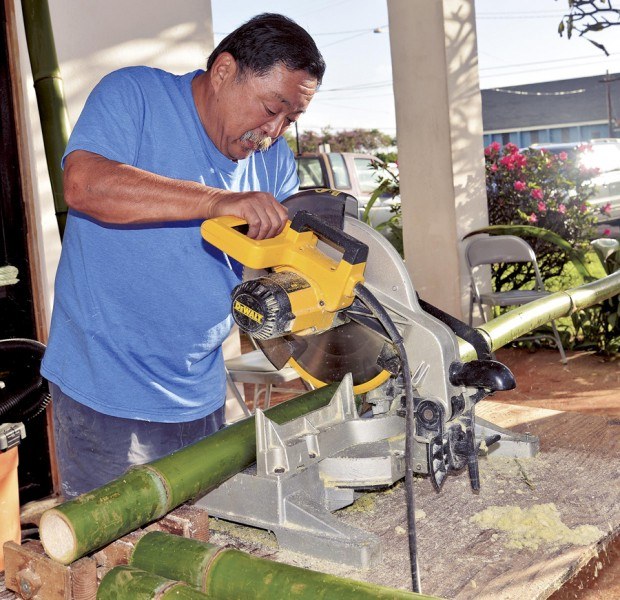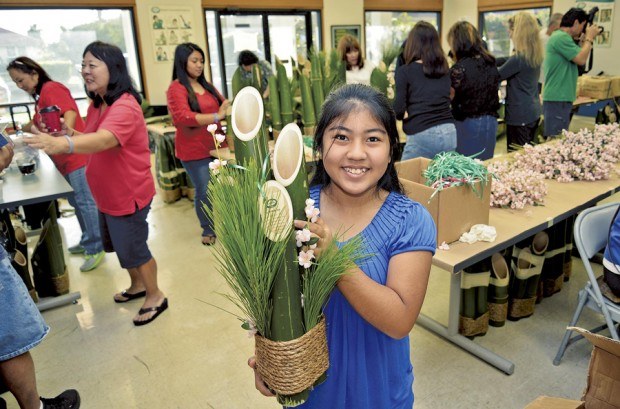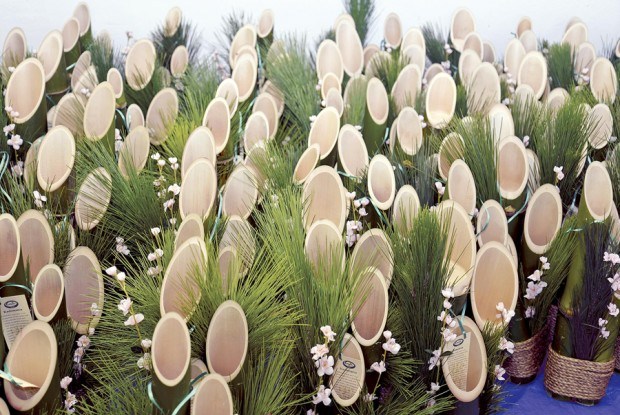LIHU‘E — Kadomatsu, a traditional New Year’s display in Hawai‘i, are now available at various places in time for a New Year’s celebration. Saturday, members of the Hawai‘i Government Employees Association turned out in force to create the New Year’s
LIHU‘E — Kadomatsu, a traditional New Year’s display in Hawai‘i, are now available at various places in time for a New Year’s celebration.
Saturday, members of the Hawai‘i Government Employees Association turned out in force to create the New Year’s arrangement utilizing bamboo, pine and plum blossoms bound together using fibrous rope.
Saturday marked the first day of pick ups for customers who placed their orders for the kadomatsu at the HGEA office located on Aikahi Street in Lihu‘e.
“This is important,” said Rep. Dee Morikawa, who was fully engrossed in assembling the displays. “We’re doing this project this morning before getting back to Waimea for its annual Christmas parade.”
Kadomatsu is a bamboo floral arrangement, which has welcomed the New Year in Japanese families. Sales from the HGEA kadomatsu are used to fund the Charles Kendall scholarship program, which provides scholarships to HGEA members and their families.
Other organizations have also picked up the practice of funding their programs as the Waimea High School Project Grad program is also offering kadomatsu sales on the Westside, according to a spectator at the opening of the Americans of Japanese Ancestry baseball season Sunday.
Gerald Ako, head of the HGEA Kaua‘i office, said the kadomatsu will be on sale through Dec. 31, or while supplies last.
HGEA members created more than 350 of the traditional pieces, an increase from last year.
Earl Kashiwagi of Esaki’s Produce, a wholesaler and distributor, said he expects his supply of kadomatsu and other New Year’s decorative pieces will be distributed after Christmas to grocery stores and other outlets in time for New Year’s.
The placement of kadomatsu on both sides of a home’s entry door stems from Japan and arrived in Hawai‘i with the immigrants who were brought over to labor in the plantations more than a hundred years ago, the practice being assimilated into Hawai‘i lifestyle.
The kadomatsu is made from bamboo, pine, or ume, or plum blossoms, bound together with a straw rope, states the Muzu-chan Gateway to Japan website.
Each of the elements in the kadomatsu carries significance, the bamboo symbolizing strength and growth and the pine symbolizing long life.
The kadomatsu, considered temporary housing for gods, or kami, are placed on the front door following Christmas and kept in place until Jan. 7 to welcome the toshigami, or the god of the New Year, who brings prosperity and good luck in the new year to families and businesses “protected” by kadomatsu.
Call Joni at 245-6751 to place an order for kadomatsu with HGEA or for more information.




